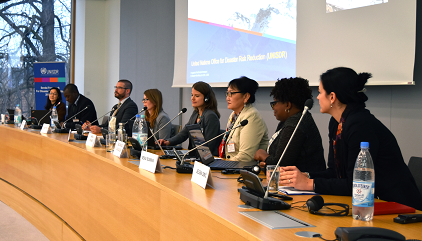
Panelists at plenary session in Bonn for launch of the Sendai Framework Monitoring Process (photo: UNISDR)
By Denis McClean
BONN, 8 December, 2017 - The Sendai Framework Monitoring Process took off this week as representatives from 85 UN Member States met in Bonn to share their knowledge and learn of the reporting requirements for the monitoring of the implementation of the Sendai Framework for Disaster Risk Reduction, the global plan for reducing disaster losses adopted in March 2015.
The area of focus for the technical workshop was on the indicators for measuring targets seeking substantial reductions in (a) mortality (b) numbers of disaster affected, (c) economic losses, and (d) damage to critical infrastructure and on target (e) which sets a deadline of 2020 for a substantial increase in the number of countries with national and local disaster risk reduction strategies.
Global targets (f) on enhancing international cooperation for the implementation of the framework and (g) on increasing availability and access to multi-hazard early warning systems and disaster risk information and assessments were also analysed.
The three-day meeting which finished today was organized by UNISDR and supported by the German government and attended by 170 representatives of countries, UN agencies, intergovernmental organizations and major stakeholder groups. It was particularly targeted at Sendai National Focal Points and representatives of national statistics offices. Support from the German Government enabled a number of representatives from least developed countries and small island developing States to attend.
Ms. Ingrid Jung, German Ambassador for the UN Liaison Office, Bonn, said: “In order to succeed with Sendai implementation we need to be able to measure the implementation progress at the international level. That is why Germany supports the Sendai Framework Monitoring Team here in Bonn in ensuring such measuring. We also need to ensure close linkage between the Sendai Monitoring Team and national risk reduction stakeholders to coordinate the monitoring process nationally.”